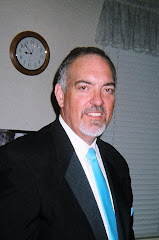In this post, I would like to expand on the topic of how excellent teams develop.
The most well known model for group or team development is probably the four stages of forming, storming, norming, and performing developed by Tuckman. Tuckman, in a later collaboration with Jensen expanded the four stage model into five stages with the addition of adjourning. Tuckman himself stated that the popularity of his model was probably based to a great degree on the rhyming terms he coined for the stages of development. As noted, while Tuckman’s model may be the most popular, it is definitely not the only one. A 1973 article by Hill and Gruner, relays an anecdotal account of someone who had collected over 100 distinct models or theories of group development. If there were over 100 in 1973, how many more must there be now!
One of the hundreds of available models that I believe adds a depth missing from Tuckman’s model is the TEAM model was developed by Morgan, Salas, and Glickman. In this model nine stages are identified (performing, forming, storming, norming, performing, reforming, performing II, conforming, and deforming). Several of these stages are the same as Tuckman’s but you may first notice the initial step is performing. This is an acknowledgement that for most teams, members have been performing prior to the formation of the new team. They may have associated with others in this new team; team members may be new to each other. In either case, team members come to the new team with life experiences that influence how they perceive teams, teamwork, and the role they anticipate playing in the new team.
The pre-existing assumptions about how a team is going to function can be a major hurdle in the effort to become high performing. Once I became the leader of a team whose other members had been together for some time. They were well entrenched in playing roles within the team that were not always emotionally healthy nor were they always productive. Further, team members had very strong feelings about the previous team leader and for the first few weeks of our working together, projected their beliefs about the motivations for his actions onto what I said and did. Finally, during one particularly dysfunctional meeting I said, “Stop. I am not Guy (not his real name). Stop projecting what you thought about him onto me.” Ultimately we were able to break through those preexisting expectations and become an excellent team. We began to look back at our early days together and laughingly referred to it as the former spouse syndrome – as the new team “spouse” I was getting blamed for everything the previous spouse had done and his motives were imputed to be mine.
A second feature assumed in the TEAM model is that a group could start at and proceed through any of the stages; revert back and revisit previous stages; basically break from the linear progression implied in Tuckman’s model. This non linear, often cyclical flow of performance depends on the previous experience of the group members with the task and with each other, on changes that arise within the group, and on environmental factors.
I have seen and worked with teams that moved quickly to the performing stage and stayed there, functioning at an acceptable to high level. I have also seen teams that seem to always be in a state of flux: team members are changing; expectations for output or team purpose are changing; relationships among team members are changing. In fact for some teams, flux may be a generous assessment and chaos may be closer to the truth. What causes this pattern to be broken and for the team to become at least better functioning if not high performing? Sometimes that change never happens and team members either give up and move on to other things, or the sponsoring organization shuts the team down. When a positive change does occur, the change can be prompted by a change in group membership (and thus dynamics), an external threat that causes the team to jell to meet that threat, or a clear unifying goal that becomes essentially a new team charter around which everyone can rally.
Another aspect to the TEAM model is the recognition there are two separate paths for team development. The first is the one in which the group learns what it must accomplish and what it needs to meet that outcome. The second path is concerned with the interpersonal and communication skills of the group. Ideally, both paths proceed in sync with each other leading to the highest level of performance and group satisfaction. As I have described in previous blogs, my research and experience clearly shows that high performing teams excel at both producing the expected outcomes of the group and in building supportive, helpful, caring relationships among team members. Excellence does not occur without both aspects.
Forming, Storming, Norming, Performing is a nice simple model that roles easily off the tongue. However, I believe the TEAM model is a better reflection of how teams actually develop and perform.
Farewell to Twitter
1 year ago




